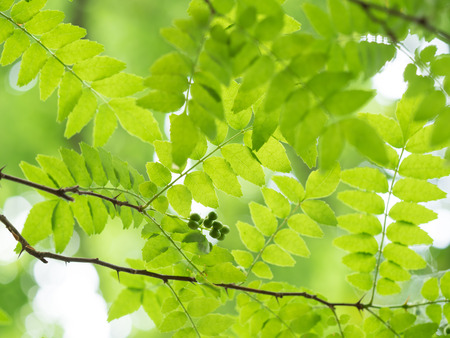Sichuan Pepper - Zanthoxylum piperitum

Common Names: Sichuan Pepper, Japanese Pepper, Chinese Pepper, Prickly Ash, Fagara, Sanshō, Mountain Pepper, Szechuan Pepper, Xanthoxylum, Zanthoxylum piperitum, Zanthoxylum, Asian Prickly Ash, Sansho Pepper, Japanese Prickly Ash
Latin Name: Zanthoxylum piperitum
Origin: Asia, North America
Short Introduction
Japanese Pepper Tree is most commonly grown by sowing seeds outdoors in autumn, though indoor stratification methods are occasionally used. In its native Southeast and East Asia, the plant is easily cultivated and has also adapted well to warm regions such as southern California. Japanese Pepper Tree prefers full sun to partial shade and occasional watering, thriving in a range of soils without special requirements.
Detailed Description
A spice from Southeast Asia renowned for its beneficial properties.
Botanical Information
Japanese Pepper Tree (Zanthoxylum piperitum) is a dioecious shrub or small tree resembling an acacia, growing up to 3 meters tall and native to China, Korea, and Japan. The plant features lanceolate, leathery leaves with slightly serrated edges, arranged alternately in groups of 5–9 pairs along the stem. Between late April and May, it produces yellow-green flowers in axillary clusters. By September, the ripened fruit pods turn a vivid crimson red and split open, revealing shiny black seeds—these pods are the actual spice used as Sichuan pepper.
Origin and Distribution
Japanese Pepper Tree thrives in temperate and subtropical zones of Southeast Asia, ranging from the southern tip of the Korean peninsula, through the Chinese provinces, and across the Japanese islands from Hokkaido to Kyushu.
Usage / Dosage
Sichuan Pepper is known by many names (see "Common Names"), but it's most widely referred to as "Sichuan Pepper" due to its extensive cultivation and harvest in China’s Sichuan province. It is prized in cooking for its distinctive aromatic and flavorful qualities, which give dishes their unique signature. Although one of China’s oldest spices, it is unrelated to black pepper.
Culinary recommendations include dry-roasting part of the pepper and setting aside the rest, then combining the two for a full range of flavors. In China, Sichuan Pepper is sometimes added to green tea for flavor, but more commonly served with chicken or pork. Caution is advised—not to overuse the spice, as excessive amounts can overpower the dish and create a numbing, pungent sensation. Notably, it offers a peppery taste without the intense heat of black pepper.
In Japan, Chinese Pepper is often paired with grilled eel and features in a variety of dishes, including miso soup, different noodles, tsuyu sauce, pickles (tsekemono), teriyaki, and rice crackers (arare). In Korean cooking, Sichuan Pepper is found in dishes like chueotang, maeuntang, and hoe (raw fish).
Sichuan Pepper contains compounds capable of inhibiting the growth and activity of Picornaviruses, which cause certain colds, intestinal issues, hepatitis A, and more. A 2014 study highlighted the antiviral properties of its flavonol glycosides, particularly against influenza virus. The essential oil components of Sichuan Pepper have also demonstrated pain-inhibiting (analgesic or anesthetic) effects by reducing transmission in nociceptive neurons. Several studies have reported its antibacterial effects as well.
Traditional Uses
Traditional Chinese medicine uses Sichuan Pepper for numerous ailments, especially for its diuretic, appetite-stimulating, digestive, and carminative actions. Other reported effects include antibacterial, antiviral, tonic, antioxidant, and antiparasitic properties. Folk medicine has used Sichuan Pepper for stomach pain, vomiting, skin issues, and as a tonic and stimulant.
Active Compounds
Sichuan Pepper is rich in aromatic compounds, the most prominent of which include essential oils like citronellal, citronellol, 3-hexenal, limonene, beta-phellandrene, cineole, alpha- and beta-pinene, camphor, sesquiterpenes (cadinol and cadinene), diterpene trans-phytol, octanoic acid, and 1-octanol. Additional compounds of interest are chlorpyrifos, dichlorvos, cuminaldehyde, thymol, verbenone, myrtenal, carvacrol, verbenol, cuminyl alcohol, and amino acids such as glutamic acid, aspartic acid, valine, leucine, arginine, as well as various fatty acids.
Traditional Dosage
There is no precisely established dosage for Chinese pepper (Sichuan Pepper) in available literature. Neither traditional Chinese medicine nor alternative approaches have defined a recommended therapeutic dose, limits for overdose, or possible adverse effects.
